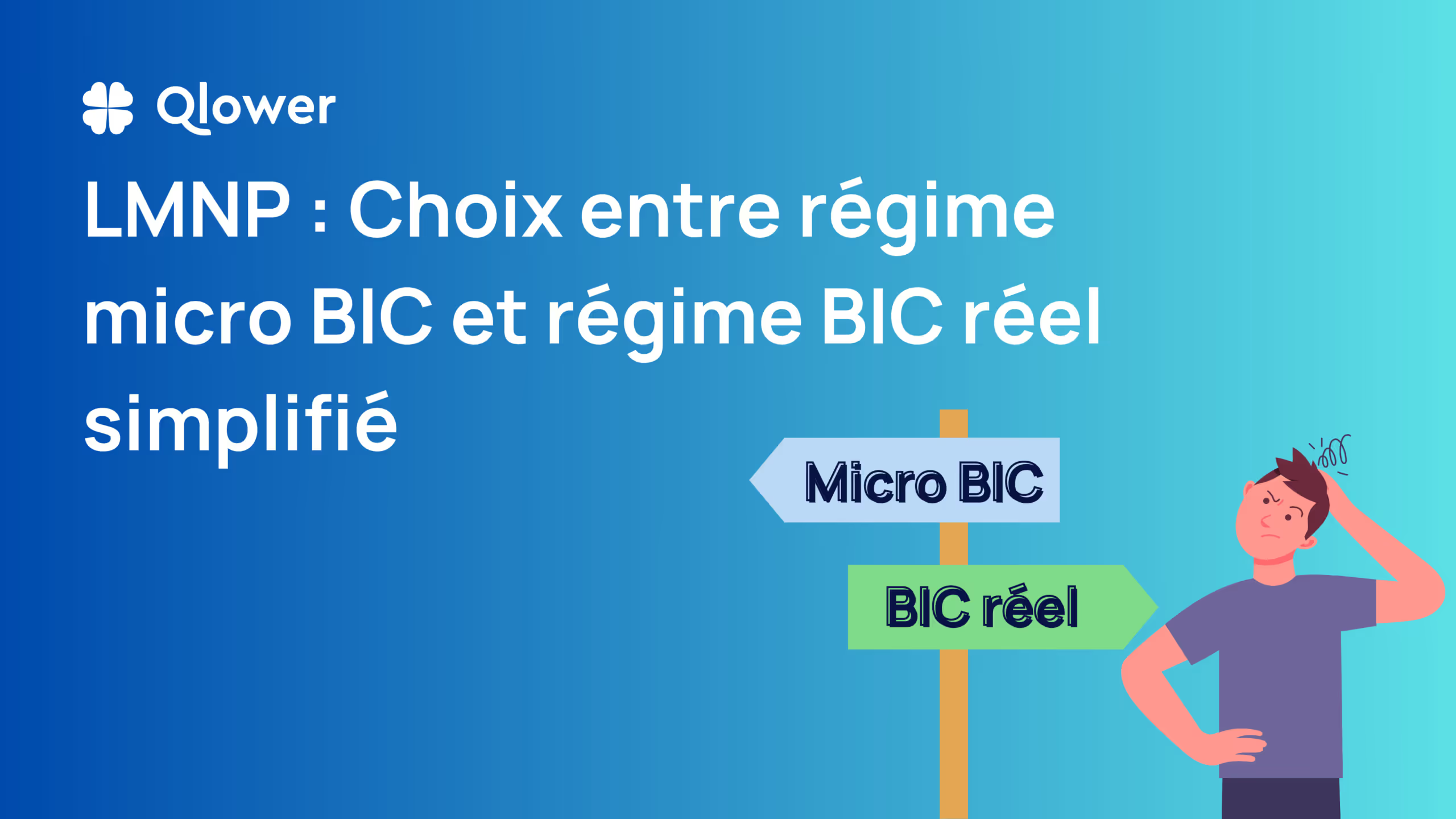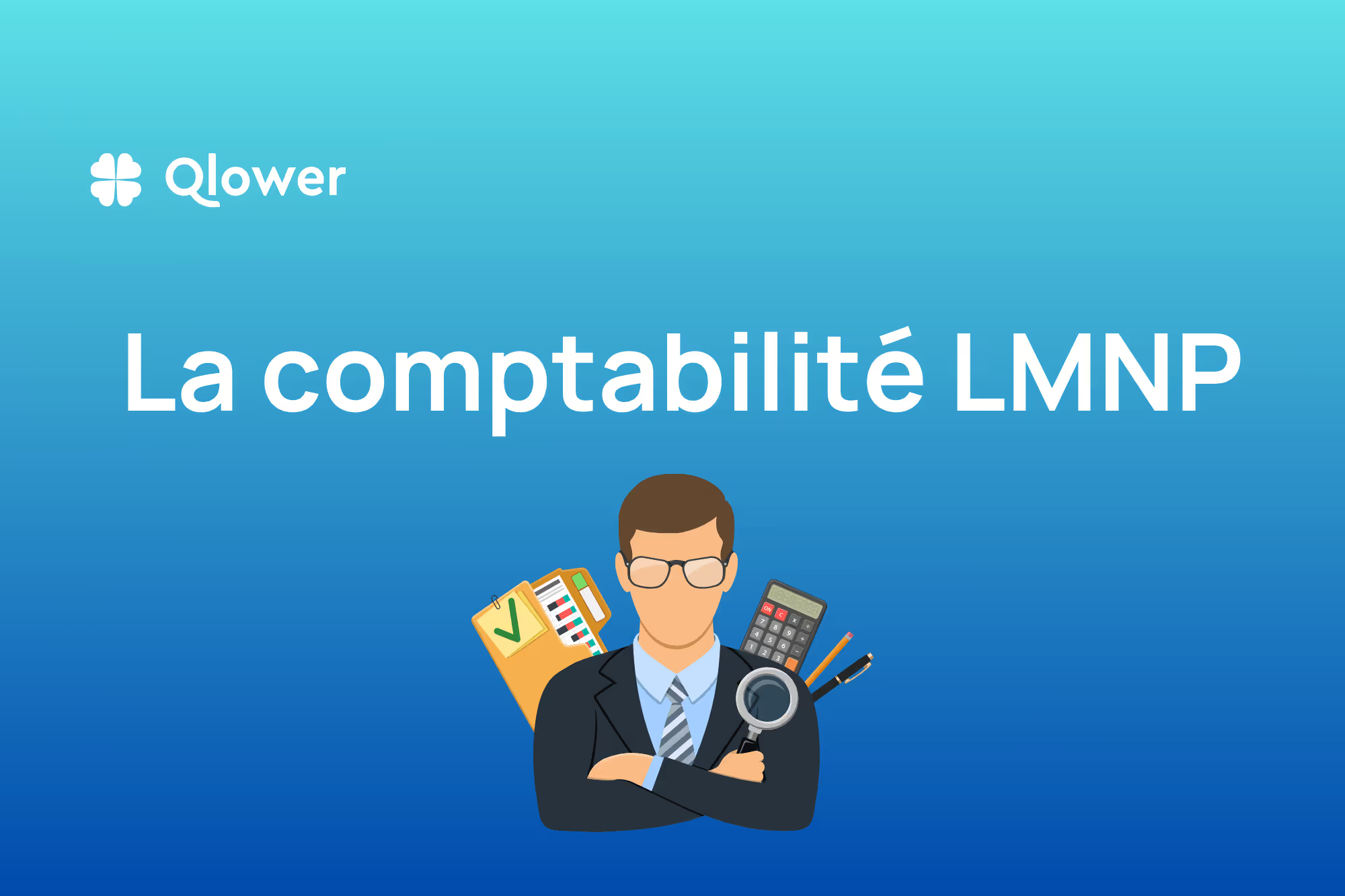LMNP: Choice between micro BIC regime and simplified real BIC regime in 2025
Non-professional furnished rentals (LMNP) offers real estate investors a great opportunity to generate rental income while benefiting from attractive tax advantages. At the heart of this investment strategy is the choice between two tax regimes: The micro BIC regime And the Simplified real BIC regime. This choice is not to be taken lightly, as it directly influences the taxation of rental income, the amount of income tax and, therefore, the profitability of your real estate investment.
In the following lines, we will explain to you the detailed functioning of each diet, their respective advantages and disadvantages, and the criteria to take into account to make an informed choice.
Understanding the Micro BIC regime and the simplified real BIC regime
When starting out in rental investment as a Non-Professional Furnished Landlord (LMNP), the question of which tax regime to choose is essential. It influences not only the accounting management of your activity but also the optimization of your rental income. Between the Micro BIC regime and the simplified real BIC regime, your choice must be informed and adapted to your situation.
How does the Micro Bic regime work
- Lump sum allowance : The Micro BIC regime is characterized by a flat rate reduction of generally 50% for expenses on your annual income. This allowance is designed to cover all your expenses, without the need to justify them. The discount varies for seasonal rentals, ranging from 71% for areas with low tension to 30% for tight areas.
- Revenue threshold : This regime is available for long-term renters whose annual revenue does not exceed €77,700 for 2025. This ceiling applies to all long-term furnished rentals.
With regard to tourist or seasonal rentals, the rules vary according to the classification and location. For unclassified rentals, a 30% discount is applied to income up to €15,000 only. In tense areas, the 30% reduction and the ceiling of €15,000 or €77,700 are still being debated. For tourist rentals classified in rural areas or winter sports resorts, a 51% discount is also applied to income up to €15,000.
- Income tax : Under the Micro BIC, the tax is calculated on 50% of your rental income, the rest being considered to cover your expenses.
- Administrative simplicity : The main advantage of the Micro BIC regime is its simplicity. The income declaration is made via the 2042-C PRO form, considerably simplifying accounting management. All you have to do is enter the total gross rental income in box 5DN.
How the simplified real BIC regime works
- Deduction of actual expenses : Unlike the Micro BIC, the simplified real BIC regime allows you to deduct all your real expenses (loan interest, condominium fees, works, insurance, rental management, accounting, acquisition costs, etc.) as well as the depreciation of the property, work and furniture.
- Tax calculation : The tax is calculated on the real profit, that is to say the rental income minus the deductible expenses And the amortizations. This can considerably reduce your tax base and therefore the tax due, which is most often €0.
- Accounting requirements : The simplified real BIC regime requires more rigorous bookkeeping, with the establishment of a balance sheet and an annual income statement, teletransmitted to the taxes in advance of the tax declaration usual. Although this represents more work or requires the use of a specialist in rental taxation, it is systematically offset by the gain on tax avoided.
- Revenue threshold : This regime is well suited when annual revenues are between €0 and €818,000 excluding taxes. It is particularly suitable for owners receiving high annual rents or having significant expenses. Above €818,000, it is mandatory to declare your income according to the normal real regime (not simplified).
What are the differences between the Micro BIC regime and the simplified real BIC regime?
The choice of the LMNP tax regime is decisive for optimizing your rental income. It is a question of choosing between the Micro BIC regime and the simplified real BIC regime, each with specific advantages and disadvantages. To help you get a better idea, let's look at the particularities of each diet.
Benefits of each diet
Micro BIC regime:
- Administrative simplicity : A simplified declaration, without the obligation to keep detailed accounts.
- Lump sum allowance : A 50% reduction on revenue for long-term furnished rentals, theoretically covering expenses, without the need to justify expenses. The reduction varies according to the location and the classified nature of tourism, to be 30%, 51% or 71% of income limited to thresholds still under discussion (15,000 euros presumably).
- Accessibility : Ideal for small investors or those with very few expenses to deduct.
Simplified real BIC regime:
- Tax optimization : Allows a precise deduction of real expenses and the depreciation of property, work and furniture, which can significantly reduce the tax base.
- Flexibility : Suitable for all types of investors, especially those generating high rental income. This is the regime to absolutely choose when buying a rental (deduction of acquisition costs).
- Adaptability : More advantageous for owners who have significant expenses to deduct or who are carrying out work to improve their property.
Disadvantages of each diet
Micro BIC regime:
- Fewer potential savings : The lump-sum allowance is less advantageous for those with real expenses greater than 50% of revenue.
- Revenue ceiling : Limited to those whose annual revenue does not exceed €77,700 for long-term furnished rentals. This ceiling is €15,000 for seasonal rentals.
Simplified real BIC regime:
- Administrative complexity : Requires bookkeeping and the possibility of having to call on a real estate tax specialist.
- Commitment : Once chosen, you must remain under this regime for a minimum of one year.
Micro BIC vs Real Comparison Chart
Criteria
Micro BIC regime
Simplified Real Regime
Abatement
50% on long-term rental income.
Deduction of real expenses and depreciation
Simplicity
+++ (Very simple)
+ (Requires accounting)
Tax optimization
+ (Less flexible)
+++ (Very advantageous for high loads)
Revenue ceiling
€77,700 or €15,000 for short term rentals
Between €77,700 and €818,000
Declaration
Form 2042-C PRO
Forms 2031 accompanied by its appendices 2033 A, B, C, D, E.
Flexibility
— (Not very flexible in case of high loads)
+++ (Great flexibility)
How do I choose between the micro BIC regime and the real BIC regime for my LMNP?
The decision between the micro BIC regime and the real BIC regime for your LMNP is decisive and must be in line with your investor profile, your tax objectives, and the nature of your investment. Here is a guide to guide you through these choices.
Investor profile and fiscal goals
- Small investors looking for simplicity, or with very few expenses to deduct : If your annual income is below the threshold of €77,700 and your expenses are very low, the micro BIC regime could be the most suitable. Its simplicity allows you to devote more time to managing your assets rather than accounting.
- Investors aiming at fiscal optimization, purchases within the year, or through financing : For those who seek to maximize their tax deductions through significant expenses (acquisition costs, financing costs) or the depreciation of their assets, the simplified real regime is systematically more advantageous.
- Long-term goals : If your investment strategy is to build a substantial real estate portfolio with high rental income, anticipating the transition to the real BIC regime may be wise from the start of the investment.
Impact of expenses and amortization
- High loads : If your actual expenses (work, loan interest, management, etc.) exceed 50% of your rental income, the real BIC regime will allow you to significantly reduce your tax base.
- Depreciation : The depreciation of property, work and furniture, not available under the micro BIC, can considerably reduce your taxable income over the long term under the real BIC regime.
- Simulation : Simulating both regimes with a real estate tax expert like Qlower can help you assess the financial and fiscal impact of each option. You can do the simulation via our simulator to assess your taxation at BIC Réel and BIC Micro.
Simplicity of management and fiscal optimization
- Simplified management : The micro BIC regime is ideal if you prefer simplicity of management. With fewer accounting formalities, you can focus on operating your assets.
- Tax optimization : If you are ready to invest in more rigorous accounting management or to call on a specialist, the real BIC regime offers greater opportunities for tax optimization through the deduction of expenses and depreciation.
What is the impact of VAT in LMNP micro BIC and real regime?
VAT management in LMNP directly influences the profitability of investments. Its impact varies significantly between micro BIC and real BIC regimes, and its understanding is necessary to optimize your real estate taxation. Let's see how VAT applies in each of these regimes and what are the implications for non-professional furnished renters.
Incidence of VAT in LMNP
In principle, furnished rentals are exempt from VAT. However, certain specific activities under the LMNP may make the lessor liable for VAT, in particular in the case of para-hotel services Or of rentals in service residences with para-hotel services.
- Tolerance threshold: According to the provisions of article 293 B of the General Tax Code, if the revenue from the furnished rental activity in the previous year is:
- For para-hotels, less than 85,800 euros or 94,300 euros (in this case, the revenue for the year N-2 must be less than 85,800 euros),
- For furnished rentals, less than 34,400 euros or 36,500 euros (in this case, the revenue for the year N-2 must be less than 34,400 euros).
Micro BIC and VAT
- Basic exemption : Under the micro BIC regime, the majority of renters benefit from VAT exemption, provided that their activities do not include para-hotel services.
- Simplified management : The simplicity of the micro BIC regime also extends to VAT management, with fewer accounting concerns related to this tax for owners meeting the turnover threshold.
Real BIC regime and VAT
- Possible deduction : The real regime allows, under certain conditions, to deduct VAT on purchases and investments related to the rental activity. This can represent a significant advantage for investors engaged in activities subject to VAT by offering para-hotel services.
- Accounting requirements : Rental companies under the real BIC regime subject to VAT must keep accurate accounts of their taxable transactions, declare and pay the VAT collected, while benefiting from the right to deduct on their own purchases related to the rental activity.
How do I switch from the micro BIC regime to the real BIC regime in LMNP?
The transition from the micro BIC regime to the real BIC regime in LMNP is a strategic approach that many investors are considering to optimize their taxation. This transition requires a precise understanding of the steps to follow and the tax implications.
For those who have already filed their furnished rental income tax return under the micro-BIC regime, the possibility of renouncing this option exists before the deadline for reporting furnished rental income for the year for which the landlord wishes to opt for the Simplified Real regime. Thus, to declare income for the year 2024 (to be declared in 2025) under the real regime, the option must be canceled before the end of 2024.
It is recommended to send the Micro Option Waiver Request by registered letter with acknowledgement of receipt. This exercise of the option in favor of the real BIC regime is valid for one year and is automatically renewed for the same period.
In the other sense, the letter renouncing the real BIC regime in favor of the BIC Micro must be sent to the business tax office to which the leased property is attached.
In addition, for those who declare furnished rental income for the first time, the obligation is to declare the start of the furnished rental activity by registering on the INPI website (via the P0i form). This will allowobtain a SIRET identification number, even for the iLMNP investors.
Note that the transition to the real BIC regime involves maintaining accurate accounts, including a balance sheet and an annual income statement. This often requires the use of a real estate tax expert like Qlower. Thus, under the real BIC regime, the declaration of rental income is made via forms 2031 and annexes 2033 for BICs, thus replacing the simplified declaration of the micro BIC.
Can the tax regime be changed every year in LMNP?
Flexibility in choosing the tax regime is an important aspect for LMNP investors, who seek to optimize their tax situation over time. The question of the possibility of changing the tax system every year therefore deserves to be addressed. In theory, non-professional furnished renters have the possibility of changing the tax regime, moving from micro BIC to simplified real BIC regime, or vice versa. However, this flexibility is governed by specific rules:
- Notification period : To switch from micro BIC to the real regime, it is necessary to inform the tax authorities before February 1 of the year for which the change should apply.
- Minimum commitment under the real regime : Once you have opted for the real regime, you are required to remain under this regime for a minimum period of one year. This means that the annual change in the tax regime is not possible without restrictions.
Factors to consider:
- Tax planning : Before making a regime change, it is important to conduct thorough tax planning to assess the short- and long-term pros and cons.
- Transition costs : Changing the tax regime does not involve administrative costs. However, there may be additional accounting costs, especially if you need the assistance of a chartered accountant.
- Impact on the tax return : Each tax regime has different implications for how your rental income is reported and taxed. A precise analysis of your personal situation is recommended to determine the most advantageous option.





